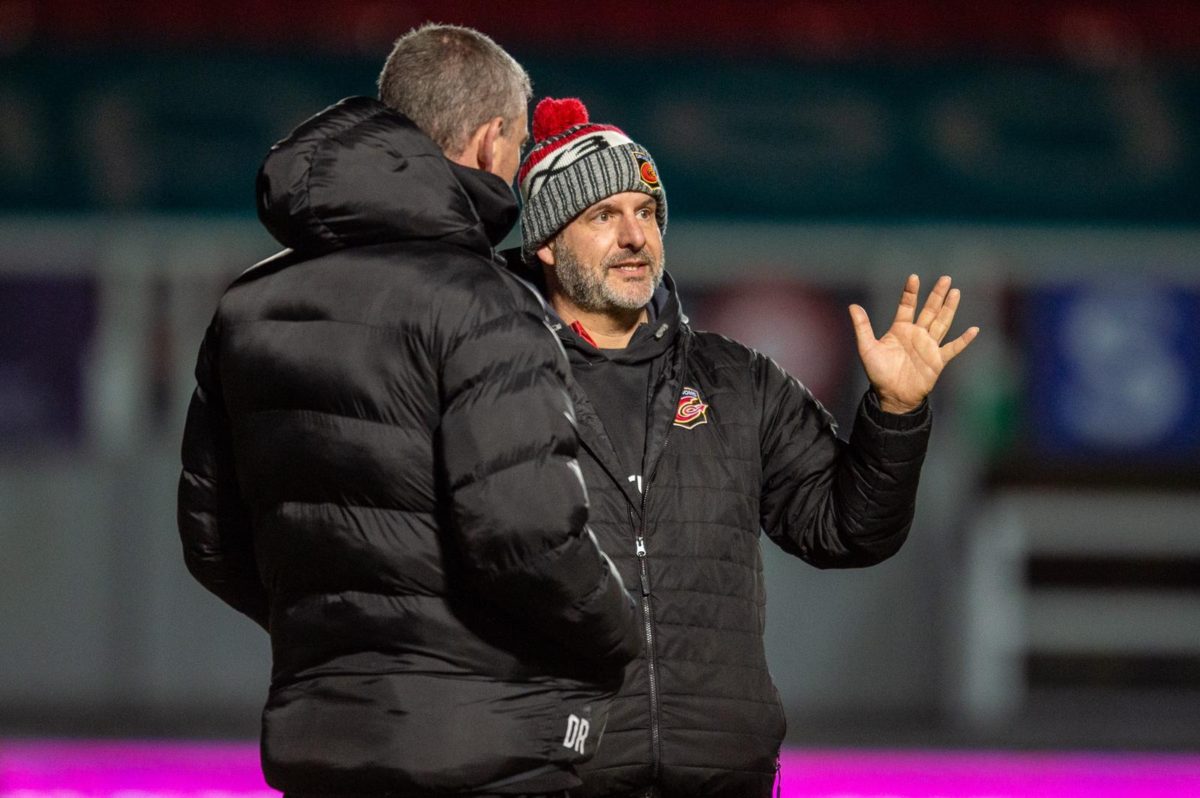Connect with us on LinkedIn for updates and the latest industry news
One area of my Mental Skills & Leadership coaching role with Dragons Rugby is helping the player leadership group to develop into more effective and influential leaders.
In a recent session, we did some work around how we think and how this affects how we act. A great way to explore this is through the two systems of thinking: System 1 and System 2 [take a look at Thinking, Fast and Slow by Daniel Kahneman].
I think about them in this way:
 System 1 thinking is instinctive and fast – it’s the system we use most of the time. It’s a superhero, moving around fast and making quick decisions based on what’s directly in front of them.
System 1 thinking is instinctive and fast – it’s the system we use most of the time. It’s a superhero, moving around fast and making quick decisions based on what’s directly in front of them.
 System 2 thinking is slower and more deliberate – picture a wise owl that spends most of its time asleep, conserving its energy for when it needs to wake up and add value.
System 2 thinking is slower and more deliberate – picture a wise owl that spends most of its time asleep, conserving its energy for when it needs to wake up and add value.
An example from Kahneman’s book brings this to life with the ‘bat and ball’ question:
A bat and ball cost £1.10 in total. The bat costs £1 more than the ball. How much does the ball cost?
Most people get the answer wrong. Almost everyone responds with “10p”, which instinctively feels right because the sum £1.10 separates naturally into £1 and 10p. But, in this instance, relying on quick-thinking System 1 generates an incorrect response. Taking a pause and thinking about the question for a bit longer allows System 2 to kick in, and probably brings out the correct answer: “5p”.
[If the bat is £1.05 and we are told it’s £1 more than the ball, then the ball is 5p. We can all do the maths, but the correct answer isn’t what first comes to mind for most of us… and we’re often happy to trust our instinctive answer!]

Patrick and Dean pitchside on game day
Switching from System 1 to System 2
From a round ball to an oval one, why is system thinking important in rugby leadership?
How we think influences our behaviour and our decision-making. Having a good understanding of system thinking can give us the control needed to generate a slower, more-deliberate response when the situation requires it – and help us to nudge our behaviour in different directions.
Players need both thinking systems on the pitch. Take ‘hitting a ruck’ as an example. We don’t want players to think too hard about this – they just need to do it! It needs to be instinctive. So we need players to be in System 1 thinking to do this.
But we then need System 2 to ‘wake up’ when something isn’t going to plan and a player is stuck in System 1, only seeing what’s directly in front of them. Involving this slower, more analytical thought process will generate different, more effective ways of approaching the situation.
Provoking System 2
By increasing players’ awareness of system thinking through repetition, we can better equip them to get their System 2 thinking up and running more easily, and more often. We’ve provoked the players to tap into their slower, more deliberate thinking style by asking more complex questions about aspects of the game, questions that demand more than an instinctive answer. Another way to encourage this repetition is to allow the players time and space to really consider these more involved questions.
It can be a challenge, in sport or business, to openly think about which system will be most helpful in which instance. Because System 1 is our default, leaders need to actively create the optimal environment for System 2. It’s not just about how we wake it up when we need it, it’s also about making sure it’s fit and ready to kick in.
It’s believed that 98% of our thinking is System 1 (our superhero), leaving just 2% of situations for System 2 to make a difference. How often in leadership are you creating opportunities for this wise owl to wake up and add value?




